|

On eBay Now...
1951 RALPH BUNCH & LEON JOUHAUX VINTAGE ORIGINAL PHOTO NOBEL PEACE PRIZE For Sale
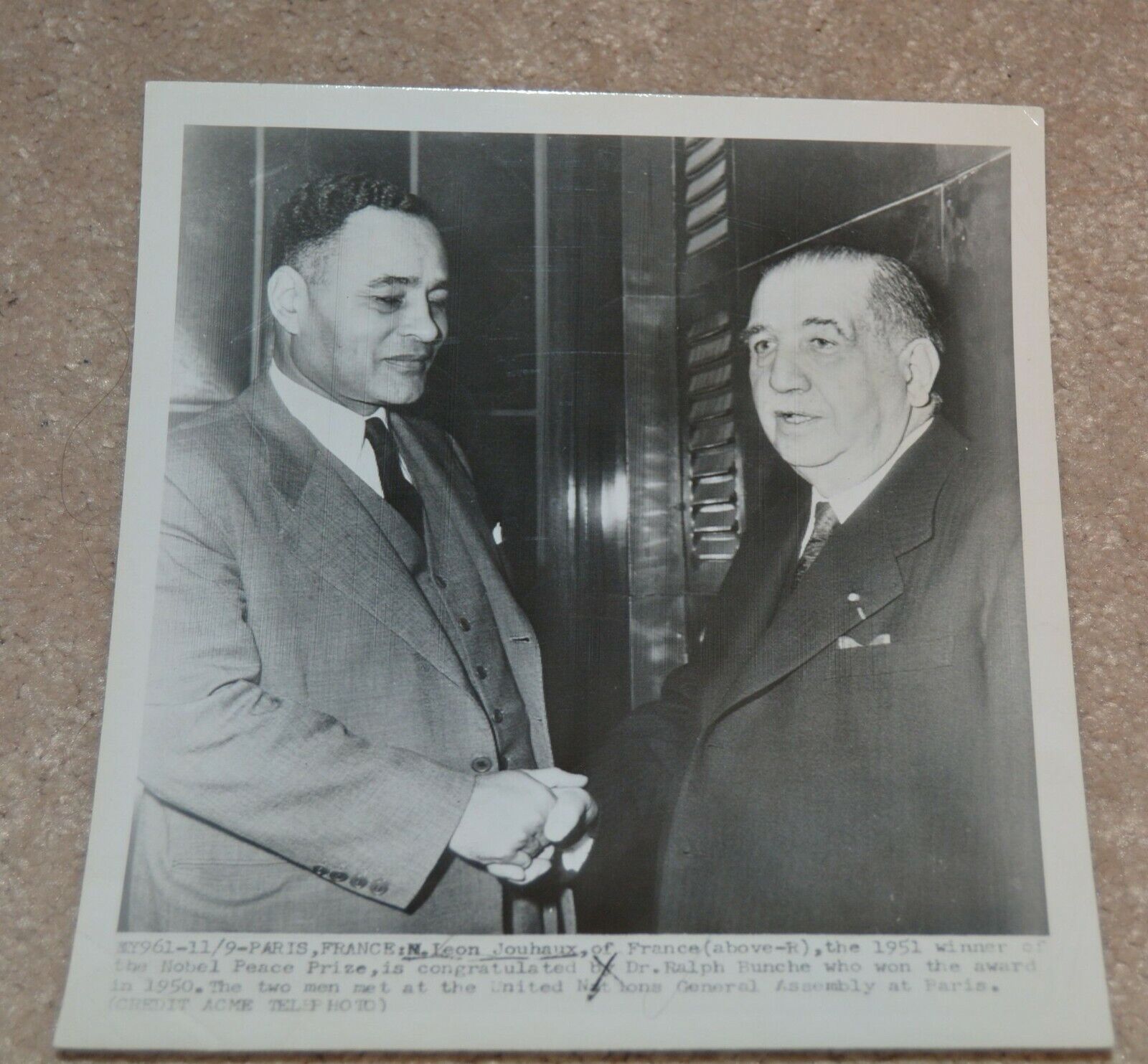
When you click on links to various merchants on this site and make a purchase, this can result in this site earning a commission. Affiliate programs and affiliations include, but are not limited to, the eBay Partner Network.

1951 RALPH BUNCH & LEON JOUHAUX VINTAGE ORIGINAL PHOTO NOBEL PEACE PRIZE:
$273.37
A VINTAGE ORIGINAL PHOTO MEASURING APPROX 7X8 INCHES FROM 1951 DEPICTING RALPH BUNCH AND LEON JOUHAUX 1951 WINNER OF THE NOBEL PEACE PRIZE AT THE UNITED NATION GENERAL ASSEMBLYLéon Jouhaux (1 July 1879 – 28 April 1954) was a French trade union leader who received the Nobel Peace Prize in 1951.[1]Contents1 Biography2 Legacy3 Quotation4 ReferencesBiographyJouhaux was born in Pantin, Seine-Saint-Denis, France. Jouhaux's father worked in a match factory in Aubervilliers. His secondary schooling ended when his father's earnings were stopped by a strike. He gained employment at the factory at age sixteen and immediately became an important part of the union. In 1900, Jouhaux joined a strike against the use of the white phosphorus that blinded his father, was dismissed, and worked at a succession of jobs until union influence saw him reinstated.
In 1906, he was elected by the local union as a representative to the General Confederation of Labour (CGT), where his abilities saw him quickly rise through the ranks of organized labour. By 1909 he became interim treasurer, and shortly afterwards became secretary-general of the organization, which he held until 1947. His goals as a trade unionist were the familiar ones of the early labour movement — the eight-hour day, the right to union representation and collective bargaining, and paid holidays. During the Popular Front, the 1936 Matignon Agreement, to which he was a signatory, awarded many of these rights to French workers.
In the years before World War II, Jouhaux organised several mass protests, and the organization he led protested against the war. However, once the war started, Jouhaux supported his country and believed that a Nazi Germany victory would lead to the destruction of democracy in Europe. During the war, he was arrested and imprisoned in Buchenwald concentration camp.
After the war, Jouhaux split from the CGT to form the social-democrat Workers' Force (CGT-FO). In 1951, he was awarded the Nobel Peace prize.[1]
In an international context, his work was instrumental in the setting up of the International Labour Organization (ILO), and was elected to high positions in international trade union bodies, including the International Federation of Trade Unions and its postwar kin the World Federation of Trade Unions until that body split.
On his passing in 1954, Léon Jouhaux was interred in Le Père Lachaise Cemetery in Paris.
LegacyThe rue Léon Jouhaux in Aix-en-Provence, Grenoble, Lyon, Genas, Villefranche-sur-Saône and Paris are named for him.[2][3][4][5][6][7]Quotation"I would not go so far as to say that the French trade unions attached greater importance to the struggle for peace than the others did; but they certainly seemed to take it more to heart." Léon Jouhaux[8]
The Nobel Peace Prize is one of the five Nobel Prizes established by the will of Swedish industrialist, inventor, and armaments manufacturer Alfred Nobel, along with the prizes in Chemistry, Physics, Physiology or Medicine, and Literature. Since March 1901,[3] it has been awarded annually (with some exceptions) to those who have "done the most or the best work for fraternity between nations, for the abolition or reduction of standing armies and for the holding and promotion of peace congresses".[4]
Per Alfred Nobel's will, the recipient is selected by the Norwegian Nobel Committee, a five-member committee appointed by the Parliament of Norway. Since 1990, the prize is awarded on 10 December in Oslo City Hall each year. The prize was formerly awarded in the Atrium of the University of Oslo Faculty of Law (1947–1989), the Norwegian Nobel Institute (1905–1946), and the Parliament (1901–1904).
Due to its political nature, the Nobel Peace Prize has, for most of its history, been the subject of numerous controversies.Contents1 Background2 Nomination and selection2.1 Nomination2.2 Selection3 Awarding the prize4 Criticism4.1 Criticism of individual conferments4.2 Notable omissions5 List of Nobel Peace Prize laureates6 See also7 References8 External linksBackground
Alfred NobelAccording to Nobel's will, the Peace Prize shall be awarded to the person who in the preceding year "shall have done the most or the best work for fraternity between nations, for the abolition or reduction of standing armies and for the holding and promotion of peace congresses".[5] Alfred Nobel's will further specified that the prize be awarded by a committee of five people chosen by the Norwegian Parliament.[6][7]
Nobel died in 1896 and he did not leave an explanation for choosing peace as a prize category. As he was a trained chemical engineer, the categories for chemistry and physics were obvious choices. The reasoning behind the peace prize is less clear. According to the Norwegian Nobel Committee, his friendship with Bertha von Suttner, a peace activist and later recipient of the prize, profoundly influenced his decision to include peace as a category.[8] Some Nobel scholars suggest it was Nobel's way to compensate for developing destructive forces. His inventions included dynamite and ballistite, both of which were used violently during his lifetime. Ballistite was used in war[9] and the Irish Republican Brotherhood, an Irish nationalist organization, carried out dynamite attacks in the 1880s.[10] Nobel was also instrumental in turning Bofors from an iron and steel producer into an armaments company.
It is unclear why Nobel wished the Peace Prize to be administered in Norway, which was ruled in union with Sweden at the time of Nobel's death. The Norwegian Nobel Committee speculates that Nobel may have considered Norway better suited to awarding the prize, as it did not have the same militaristic traditions as Sweden. It also notes that at the end of the 19th century, the Norwegian parliament had become closely involved in the Inter-Parliamentary Union's efforts to resolve conflicts through mediation and arbitration.[8]
Nomination and selection
The Norwegian Nobel Institute in Oslo, NorwayThe Norwegian Parliament appoints the Norwegian Nobel Committee, which selects the Nobel Peace Prize laureate.
NominationEach year, the Norwegian Nobel Committee specifically invites qualified people to submit nominations for the Nobel Peace Prize.[11] The statutes of the Nobel Foundation specify categories of individuals who are eligible to make nominations for the Nobel Peace Prize.[12] These nominators are:
Members of national assemblies and governments and members of the Inter-Parliamentary UnionMembers of the Permanent Court of Arbitration and the International Court of Justice at the HagueMembers of Institut de Droit InternationalUniversity professors of history, social sciences, philosophy, law, and theology, university presidents, and directors of peace research and international affairs institutesFormer recipients, including board members of organizations that have previously received the prizePresent and past members of the Norwegian Nobel CommitteeFormer permanent advisers to the Norwegian Nobel Institute
The 14th Dalai Lama and Archbishop Desmond Tutu, Nobel Peace Prize laureatesNominations must usually be submitted to the Committee by the beginning of February in the award year. Nominations by committee members can be submitted up to the date of the first Committee meeting after this deadline.[12]
In 2009, a record 205 nominations were received,[13] but the record was broken again in 2010 with 237 nominations; in 2011, the record was broken once again with 241 nominations.[14] The statutes of the Nobel Foundation do not allow information about nominations, considerations, or investigations relating to awarding the prize to be made public for at least 50 years after a prize has been awarded.[15] Over time, many individuals have become known as "Nobel Peace Prize Nominees", but this designation has no official standing, and means only that one of the thousands of eligible nominators suggested the person's name for consideration.[16] Indeed, in 1939, Adolf Hitler received a satirical nomination from a member of the Swedish parliament, mocking the (serious but unsuccessful) nomination of Neville Chamberlain; however, nominations from 1901 to 1956 have been released in a are considered by the Nobel Committee at a meeting where a short list of candidates for further review is created. This short list is then considered by permanent advisers to the Nobel institute, which consists of the Institute's Director and the Research Director and a small number of Norwegian academics with expertise in subject areas relating to the prize. Advisers usually have some months to complete reports, which are then considered by the Committee to select the laureate. The Committee seeks to achieve a unanimous decision, but this is not always possible. The Nobel Committee typically comes to a conclusion in mid-September, but occasionally the final decision has not been made until the last meeting before the official announcement at the beginning of October.[19]
Awarding the prize
Obverse and reverse of the Nobel Peace Prize MedalThe Chairman of the Norwegian Nobel Committee presents the Nobel Peace Prize in the presence of the King of Norway on 10 December each year (the anniversary of Nobel's death). The Peace Prize is the only Nobel Prize not presented in Stockholm. The Nobel laureate receives a diploma, a medal, and a document confirming the prize amount.[20] As of 2019, the prize was worth 10 million SEK (about US$1.03 million). Since 1990, the Nobel Peace Prize Ceremony is held at Oslo City Hall.
From 1947 to 1989, the Nobel Peace Prize ceremony was held in the Atrium of the University of Oslo Faculty of Law, a few hundred metres from Oslo City Hall. Between 1905 and 1946, the ceremony took place at the Norwegian Nobel Institute. From 1901 to 1904, the ceremony took place in the Storting (Parliament).[21]
On 10 December 2017, the Nobel Peace Prize Award Ceremony was held at City Hall of the Norwegian capital Oslo.[22] The prize was awarded by king Harald V of Norway to International Campaign to Abolish Nuclear Weapons (ICAN).[23] Setsuko Thurlow, a Hiroshima survivor, received the prize on behalf of ICAN.[24]
The ceremony of 2018 was held at the same place. The peace prize was awarded jointly to two activists to end "sexual violence" and "war and arm conflict", Denis Mukwege and Nadia Murad.[25]
CriticismIt has been expressed that the Nobel Peace Prize has been awarded in politically motivated ways for more recent or immediate achievements,[26] or with the intention of encouraging future achievements.[26][27] Some commentators have suggested that to award a peace prize on the basis of unquantifiable contemporary opinion is unjust or possibly erroneous, especially as many of the judges cannot themselves be said to be impartial observers.[28] The Nobel Peace Prize has become increasingly politicized, in which people are awarded for aspiration rather than accomplishment, which has allowed for the prize to be used for political effect but can cause perverse consequences due to the neglect of existing power politics.[29]
In 2011, a feature story in the Norwegian newspaper Aftenposten contended that major criticisms of the award were that the Norwegian Nobel Committee ought to recruit members from professional and international backgrounds, rather than retired members of parliament; that there is too little openness about the criteria that the committee uses when they choose a recipient of the prize; and that the adherence to Nobel's will should be more strict. In the article, Norwegian historian Øivind Stenersen argues that Norway has been able to use the prize as an instrument for nation building and furthering Norway's foreign policy and economic interests.[30]
In another 2011 Aftenposten opinion article, the grandson of one of Nobel's two brothers, Michael Nobel, also criticised what he believed to be the politicisation of the award, claiming that the Nobel Committee has not always acted in accordance with Nobel's will.[31] Norwegian lawyer Fredrik S. Heffermehl has criticized the management of the Peace Prize.[32]
Criticism of individual confermentsMain article: Nobel Prize controversiesBarack Obama with Thorbjørn JaglandBarack Obama with Thorbjørn Jagland at the 2009 Nobel Peace Prize ceremonyThe awards given to Mikhail Gorbachev,[33] Yitzhak Rabin, Shimon Peres, Menachem Begin and Yasser Arafat,[34][35] Lê Đức Thọ, Aung San Suu Kyi,[36][37] Henry Kissinger,[38] Jimmy Carter,[39] Al Gore,[40] Liu Xiaobo,[41][42][43] Barack Obama,[44][45][46][47] and the European Union[48] have all been the subject of controversy.
The awards given to Lê Đức Thọ and Henry Kissinger prompted two dissenting Committee members to resign.[49] Thọ refused to accept the prize, on the grounds that such "bourgeois sentimentalities" were not for him[50] and that peace had not actually been achieved in Vietnam. Kissinger donated his prize money to charity, did not attend the award ceremony and later offered to return his prize medal after the fall of South Vietnam to North Vietnamese forces 18 months later.[50]
Notable omissionsForeign Policy has listed Mahatma Gandhi, Eleanor Roosevelt, U Thant, Václav Havel, Ken Saro-Wiwa, Fazle Hasan Abed and Corazon Aquino as people who "never won the prize, but should have".[51][52]
The omission of Mahatma Gandhi has been particularly widely discussed, including in public statements by various members of the Nobel Committee.[53][54] The Committee has confirmed that Gandhi was nominated in 1937, 1938, 1939, 1947, and, finally, a few days before his assassination in January 1948.[55] The omission has been publicly regretted by later members of the Nobel Committee.[53] Geir Lundestad, Secretary of Norwegian Nobel Committee in 2006 said, "The greatest omission in our 106-year history is undoubtedly that Mahatma Gandhi never received the Nobel Peace prize. Gandhi could do without the Nobel Peace prize, whether Nobel committee can do without Gandhi is the question".[56] In 1948, following Gandhi's death, the Nobel Committee declined to award a prize on the ground that "there was no suitable living candidate" that year. Later, when the Dalai Lama was awarded the Peace Prize in 1989, the chairman of the committee said that this was "in part a tribute to the memory of Mahatma Gandhi".[57]
List of Nobel Peace Prize laureates
View of a diploma – Nobel Peace Prize 2001, United NationsFor a more comprehensive list, see List of Nobel Peace Prize laureates.As of 2016, the Peace Prize has been awarded to 104 individuals and 23 organizations. Sixteen women have won the Nobel Peace Prize, more than any other Nobel Prize.[58] Only two recipients have won multiple Prizes: the International Committee of the Red Cross has won three times (1917, 1944, and 1963) and the Office of the United Nations High Commissioner for Refugees has won twice (1954 and 1981).[59] Lê Đức Thọ is the only person who refused to accept the Nobel Peace Prize.[60]
Ralph Johnson Bunche (/bʌntʃ/; August 7, 1904 – December 9, 1971) was an American political scientist, academic, and diplomat who received the 1950 Nobel Peace Prize for his late 1940s mediation in Israel. He was the first African American to be so honored. He was involved in the formation and administration of the United Nations and played a major role in numerous peacekeeping operations sponsored by the UN. In 1963, he was awarded the Presidential Medal of Freedom by President John F. Kennedy.[1]
Bunche served on the US delegation to both the Dumbarton Oaks Conference in 1944 and United Nations Conference on International Organization in San Francisco in 1945 that drafted the UN charter. Bunche served on the American delegation to the first session of the United Nations General Assembly in 1946. He then joined the UN as head of the Trusteeship Department, and began a long series of troubleshooting roles. In 1948 he became an acting mediator for the Middle East, negotiating an armistice between Egypt and Israel. For this success he was awarded the Nobel Peace Prize in 1950. He continued to serve at the United Nations, working on crises in the Sinai (1956), the Congo (1960), Yemen (1963), Cyprus (1964) and Bahrain in 1970, reporting directly to the UN secretary general. He also chaired study groups dealing with water resources in the Middle East. In 1957 he was promoted to Undersecretary for special political affairs, having prime responsibility for peacekeeping roles. In 1965 he supervised the cease-fire following the war between India and Pakistan. He retired from the UN in 1971.[2]Contents1 Ancestry2 Early life and education3 World War II years4 United Nations4.1 Arab–Israeli conflict and Nobel Peace Prize5 Civil Rights Movement6 Marriage and family7 Death8 Honors9 Selected bibliography10 See also11 References12 Further reading13 External linksAncestry
Bunche's childhood home with his grandmother in South Los Angeles.Bunche was born in Detroit, Michigan in 1904 and baptized at the city's Second Baptist Church. His father Fred Bunche was a barber and his mother, Olive Agnes (née Johnson), was an amateur musician, from a "large and talented family."[3] Her siblings included Charlie and Ethel Johnson.[3]
His maternal grandfather, Thomas Nelson Johnson, was mixed-race, the son of Eleanor Madden and her husband. Eleanor was the mixed-race daughter of an African-American slave mother and Irish planter father. Thomas Nelson Johnson graduated from Shurtleff College in Alton, Illinois in 1875, and then worked there as a teacher. In September 1875 he married Lucy Taylor, one of his students.[3]
Genealogist Paul Heinegg thinks that Fred Bunche (and Ralph) were probably descended from the South Carolina branch of the family but notes it has not been proven. He said that the censuses of 1900 and 1910 for Detroit "list several members of the Bunch family who were born in South Carolina, but Fred Bunch was not among them."[4] He believes that Bunche was descended from Bunch ancestors established as free people of color in Virginia before the American Revolution. There were men of the Bunch surname in South Carolina by the end of the 18th century.[4] The Bunch/Bunche surname was extremely rare.[5] Several generations of the Bunch men, free men of color, married white women colonists from the British Isles, who were free, so their children were free.[6]
Early life and educationWhen Ralph was a child, his family moved to Toledo, Ohio, where his father looked for work. They returned to Detroit in 1909 after his sister Grace was born, with the help of their maternal aunt, Ethel Johnson. Their father did not live with the family again after Ohio and had not been "a good provider." But he followed them when they moved to New Mexico.[3]
Because of the declining health of his mother and uncle, Ralph moved with his maternal grandmother, Lucy Taylor Johnson, to Albuquerque, New Mexico in 1915. His mother died in 1917; his uncle committed suicide three months later.[3] Bunche was 13 years old.
In 1918, Lucy Taylor Johnson moved with the two Bunche grandchildren to the South Central neighborhood of Los Angeles, which was then mostly white.[3][7][8] Fred Bunche later remarried, and Ralph never saw him again.[3]
Bunche was a brilliant student, a debater, and the valedictorian of his graduating class at Jefferson High School. He attended the University of California, Los Angeles (UCLA), and graduated summa cum laude and Phi Beta Kappa[9] in 1927 as the valedictorian of his class. Using the money his community raised for his studies and a graduate scholarship at Harvard University, he earned a doctorate in political science.
To help with living expenses at Harvard, Bunche sought a job at a local bookstore. The owner offered him a part-time job, and Bunche ran the store to his employer's satisfaction. One day the owner called him into the office and said, "Folks tell me you're a Negro. I don't give a damn, but are you?" Bunche asked, "What did you think?" and the owner said, "I couldn't see you clear enough."[8]
Bunche earned a master's degree in political science in 1928 and a doctorate in 1934, while he was already teaching in the Department of Political Science at Howard University, an historically black college established at the end of the Civil War. At the time, it was typical for doctoral candidates to start teaching before completion of their dissertations. He was the first African American to gain a PhD in political science from an American university. He published his first book, World View of Race, in 1936.[3] From 1936 to 1938, Ralph Bunche conducted postdoctoral research in anthropology at the London School of Economics (LSE), and later at the University of Cape Town in South Africa.
For more than two decades (1928–1950), Bunche served as chair of the Department of Political Science at Howard University, where he also taught generations of students. He served as a member of the Board of Overseers of his alma mater, Harvard University (1960–1965), as a member of the board of the Institute of International Education, and as a trustee of Oberlin College, Lincoln University, and New Lincoln School.
World War II yearsIn 1940, Bunche contributed, as an investigative researcher and writer, to Swedish sociologist Gunnar Myrdal's landmark study of racial dynamics in the U.S., An American Dilemma.
In 1941-43 Bunche worked in the Office of Strategic Services (OSS), the wartime intelligence service, as a senior social analyst on Colonial Affairs. In 1943, he was transferred from the OSS to the State Department. He was appointed Associate Chief of the Division of Dependent Area Affairs under Alger Hiss. With Hiss, Bunche became one of the leaders of the Institute of Pacific Relations (IPR). He participated in the preliminary planning for the United Nations at the San Francisco Conference of 1945. In 2008, the U.S. National Archives and Records Administration released a 51-page PDF of his OSS records, which is available online.[10]
United NationsNear the close of World War II in 1944, Bunche took part in planning for the United Nations at the Dumbarton Oaks Conference, held in Washington, D.C. He was an adviser to the U.S. delegation for the "Charter Conference" of the United Nations held in 1945, when the governing document was drafted. Together with First Lady Eleanor Roosevelt, Bunche was instrumental in the creation and adoption of the Universal Declaration of Human Rights. Bunche urged Afro-Americans to take UN positions. "Negroes ought to get busy and prepare to obtain some of the jobs in the United Nations' set-up," he counseled. "There are going to be all kinds of jobs and Negroes should attempt to get jobs on all levels. Some organization should be working on this now."[11]
According to the United Nations document, "Ralph Bunche: Visionary for Peace," during his 25 years of service to the United Nations, he
... championed the principle of equal rights for everyone, regardless of race or creed. He believed in 'the essential goodness of all people, and that no problem in human relations is insoluble.' Through the UN Trusteeship Council, Bunche readied the international stage for a period of rapid transformation, dismantling the old colonial systems in Africa and Asia, and guiding scores of emerging nations through the transition to independence in the post-war era.
Arab–Israeli conflict and Nobel Peace PrizeBeginning in 1947, Bunche was involved with trying to resolve the Arab–Israeli conflict in Palestine. He served as assistant to the United Nations Special Committee on Palestine, and thereafter as the principal secretary of the UN Palestine Commission. In 1948, he traveled to the Middle East as the chief aide to Sweden's Count Folke Bernadotte, who had been appointed by the UN to mediate the conflict. These men chose the island of Rhodes for their base and working headquarters. In September 1948, Bernadotte was assassinated in Jerusalem by members of the underground Jewish Lehi group, which was led by Yitzhak Shamir.Bunche issued passes for United Nations personnel monitoring the 1949 Armistice Agreements.
Bunche with Prime Minister Levi Eshkol, 1966Following the assassination, Bunche became the UN's chief mediator; he conducted all future negotiations on Rhodes. The representative for Israel was Moshe Dayan; he reported in memoirs that much of his delicate negotiation with Bunche was conducted over a billiard table while the two were shooting pool. Optimistically, Bunche commissioned a local potter to create unique memorial plates bearing the name of each negotiator. When the agreement was signed, Bunche awarded these gifts. After unwrapping his, Dayan asked Bunche what might have happened if no agreement had been reached. "I'd have broken the plates over your damn heads," Bunche answered. For achieving the 1949 Armistice Agreements, Bunche received the Nobel Peace Prize in 1950.[12][13] He continued to work for the United Nations, mediating in other strife-torn regions, including the Congo, Yemen, Kashmir, and Cyprus. Bunche was appointed Under-Secretary-General of the United Nations in 1968.
Civil Rights Movement
The grave of Ralph BuncheBunche was an active and vocal supporter of the Civil Rights Movement in the United States. He participated in the 1963 March on Washington, where Martin Luther King gave his "I Have a Dream" speech, and also in the Selma to Montgomery, Alabama march in 1965, which contributed to passage of the landmark Voting Rights Act of 1965 and federal enforcement of voting rights.[14]
Bunche lived in the Kew Gardens neighborhood of Queens, New York, in a home purchased with his Nobel Prize money, from 1953 until his death.[15] Like many other people of color, Bunche continued to struggle against racism across the United States and sometimes in his own neighborhood. In 1959, he and his son, Ralph, Jr., were denied membership in the West Side Tennis Club in the Forest Hills neighborhood of Queens. After the issue was given national coverage by the press, the club offered the Bunches an apology and invitation of membership. The official who had rebuffed them resigned. Bunche refused the offer, saying it was not based on racial equality and was an exception based only on his personal prestige.[7]
Bunche was never a communist or Marxist, and instead came under very heavy attack from the pro-Soviet press.[16]
Marriage and familyWhile teaching at Howard University in 1928, Bunche met Ruth Harris as one of his students. They later started seeing each other and married June 23, 1930. The couple had three children: Joan Harris Bunche (b. 1931), Jane Johnson Bunche (b. 1933), and Ralph J. Bunche, Jr. (b. 1943).[3] His grandson, Ralph J. Bunche III, is the General Secretary of the Unrepresented Nations and Peoples Organization, an international membership organization established to facilitate the voices of unrepresented and marginalised nations and peoples worldwide.
On October 9, 1966, their daughter Jane Bunche Pierce fell or jumped from the roof of her Riverdale, Bronx apartment building; her death was believed to be suicide.[3] She left no note. She and her husband Burton Pierce, a Cornell alumnus and labor relations executive, had three children. Their apartment was on the first floor of the building.[17]
DeathBunche resigned from his position at the UN due to ill health, but this was not announced, as Secretary-General U Thant hoped he would be able to return soon. His health did not improve, and Bunche died December 9, 1971, at age 68, from complications of diabetes mellitus. He was survived by his wife Ruth, daughter Joan, son Ralph, and the three Pierce grandchildren.[7] His wife later enjoyed three additional grandchildren and several great-grandchildren.[1] He is buried in Woodlawn Cemetery in The Bronx, New York City.[18]
HonorsAwardsIn 1949, he was awarded the Spingarn Medal from the NAACP.[19]In 1950, he was awarded the Nobel Prize for Peace, for his work in resolving the Arab-Israeli conflict in PalestineIn 1951, Bunche was awarded the Silver Buffalo Award by the Boy Scouts of America for his work in scouting and positive impact for the world[20]In 2002, scholar Molefi Kete Asante included Ralph Bunche on his list of 100 Greatest African Americans.[21]In 2004, Ralph Bunche was posthumously honored with the William J. Donovan Award from the OSS Society.A scholarship at UCLA was named for him.[22] The Ralph Bunche Committee is named for him, in the UCLA Alumni Association's Alumni Scholars Club.[23]A scholarship at Colby was named for him [24]MemorialsOn February 11, 1972, the site of his birth in Detroit was listed as a Michigan Historic Site. Mrs. Ruth Bunche attended the unveiling of a historical marker on April 27, 1972.[8][25]On January 12, 1982, the United States Postal Service issued a Great Americans series 20¢ postage stamp in his honor.In 1996, Howard University named its international affairs center, a physical facility and associated administrative programs, the Ralph J. Bunche International Affairs Center. The Center is the site of lectures and internationally oriented programming.[26]BuildingsColgate University has the Ralph J. Bunche House which is a housing option available to juniors and seniors and can also be home to special interest groups.[27]Bunche Hall, named in his honor, at UCLA. A bust of Dr. Bunche was erected at the entrance[28]The Ralph J. Bunche Library of the U.S. Department of State is the oldest Federal government library. Founded by the first Secretary of State, Thomas Jefferson, in 1789, it was dedicated to and renamed the Ralph J. Bunche Library on May 5, 1997. It is located in the Harry S. Truman Building, the main State Department headquarters.A neighborhood of West Oakland, home to Ralph Bunche High School[29], is also known as "Ralph Bunche."Elementary schools were named after him in Midland, Texas; Markham, Illinois; Flint, Michigan; Detroit, Michigan; Ecorse, Michigan; Canton, Georgia; Miami, Florida; Fort Wayne, Indiana; Oakland, California; Compton, California, Metairie, Louisiana; and New York City; high schools were named after him in King George County, VirginiaThe Dr. Ralph J. Bunche Peace and Heritage Center, his boyhood home with his grandmother, has been listed on the National Register of Historic Places and City of Los Angeles Historic-Cultural Landmarks, HCM #159. The building has been restored and is operated as an interpretive house Museum and Community Center.In Glasgow, Kentucky, the Liberty District-Ralph Bunche Community Center, to support community relations and cultural understanding, was named in his honor.Ralph Bunche High School in King George, VirginiaParksRalph Bunche Park was named for him in New York City; it is located across First Avenue from the United Nations headquarters.Near Ft. Myers, Florida, historically black beaches in the age of segregation, have been named Bunche Beach [30]The neighborhood of Bunche Park in the city of Miami Gardens, Florida, was named in his honor.Ralph Bunche Road in Nairobi, Kenya, is named after him.Several of Bunche's residences are listed on the National Register of Historic Places:
Name Location Years of Residence NotesRalph J. Bunche House Los Angeles, Cal. 1919?–1928? Also a Los Angeles Historical-Cultural Monument.Ralph Bunche House Washington, D.C. 1941–1947 Built for Bunche.[31]Parkway Village Queens, N.Y. 1947–1952 Apartment complex built for UN employees.[31]Ralph Johnson Bunche House Queens, N.Y. 1952–1971 Also a National Historic Landmark and a New York City designated landmark.[31]

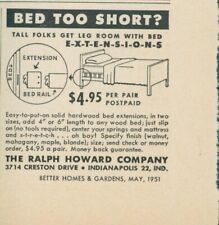
1951 Ralph Howard Bed Extension Bed Too Short Get Leg Room Vintage Print Ad BH1 $9.99

1951 RALPH BUNCH & LEON JOUHAUX VINTAGE ORIGINAL PHOTO NOBEL PEACE PRIZE $273.37
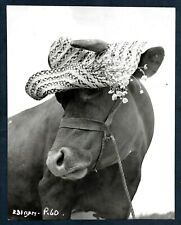
RALPH THOMAS FILM APPOIMENT WITH VENUS´S BOBINE STAR 1951 COMEDY Photo Y 198 $19.99

RALPH THOMAS FILM APPOIMENT WITH VENUS´S BOBINE STAR 1951 COMEDY Photo Y 198 $19.99
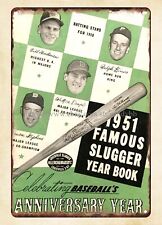
1951 baseball Famous Slugger Yearbook cover Ralph Kiner metal tin sign $18.91
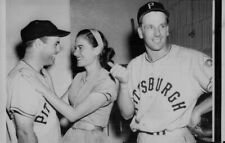
1951 Ralph Kiner Pittsburgh Baseball & Joe Garagiola Press Photo $24.99
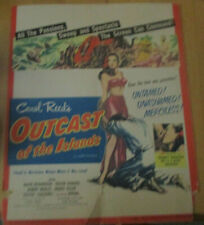
Carol Reed's "Outcast of the Islands" Trimmed Window Card Ralph Richardson 1951 $18.00
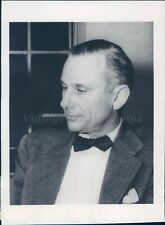
1951 Ralph Thompson Newspaper Columnist Teacher English Literature Chief Photo $19.99
|